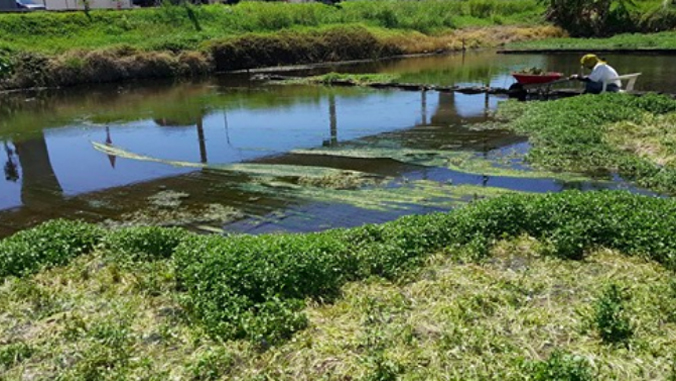
A University of Hawaiʻi at Mānoa study warns of higher future water costs in Hawaiʻi, if resources are not conserved now.
Researchers from University of Hawaiʻi Economic Research Organization (UHERO) in the College of Social Sciences collaborated with a team of scientists from the National Science Foundation-funded ʻIke Wai project to study the effects of groundwater in the Pearl Harbor aquifer. They analyzed the balance between protecting the important spring system and groundwater pumping. Their findings were published in Frontiers.
Sumida Farm
To examine spring discharge, the researchers studied Sumida Farm, a ten-acre watercress farm in Pearl City, heavily dependent on free-flowing spring water. Spring discharge at the farm has decreased from 10 million gallons per day (MGD) when the farm started in 1928 to approximately 5 MGD by the 1990s, when the Sumida family observed lower crop yields. Along with spring-dependent agriculture, spring discharge is also important for coastal ecosystems.
Groundwater pumping
To study groundwater pumping, the researchers analyzed 27 of the 98 pumping wells in the Pearl Harbor area with pumping rates of at least 1 MGD. They simulated a 50-year period from 2021 to 2070 and determined the maximum groundwater pumping without adverse effects in the Pearl Harbor aquifer is 127 MGD, only slightly higher than the current rate of 117 MGD.
Recommendations
Researchers said without reducing water consumption, restricting groundwater pumping to maintain an optimal spring discharge rate increases costs to other water users. Behavioral, policy and technological changes are needed to increase water use efficiency.
View the full report on UHERO’s website.
- Related UH News Story: Sumida Farm, UH researchers collaborate on water sustainability, April 30, 2019

